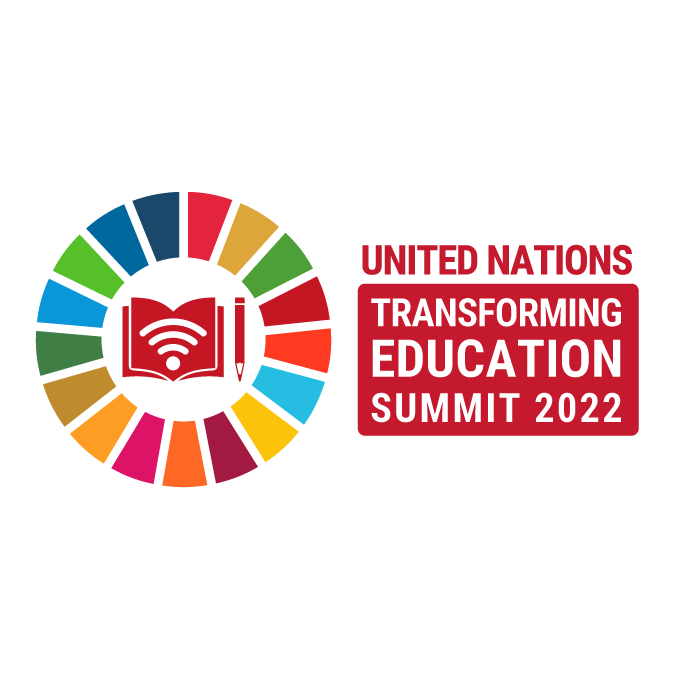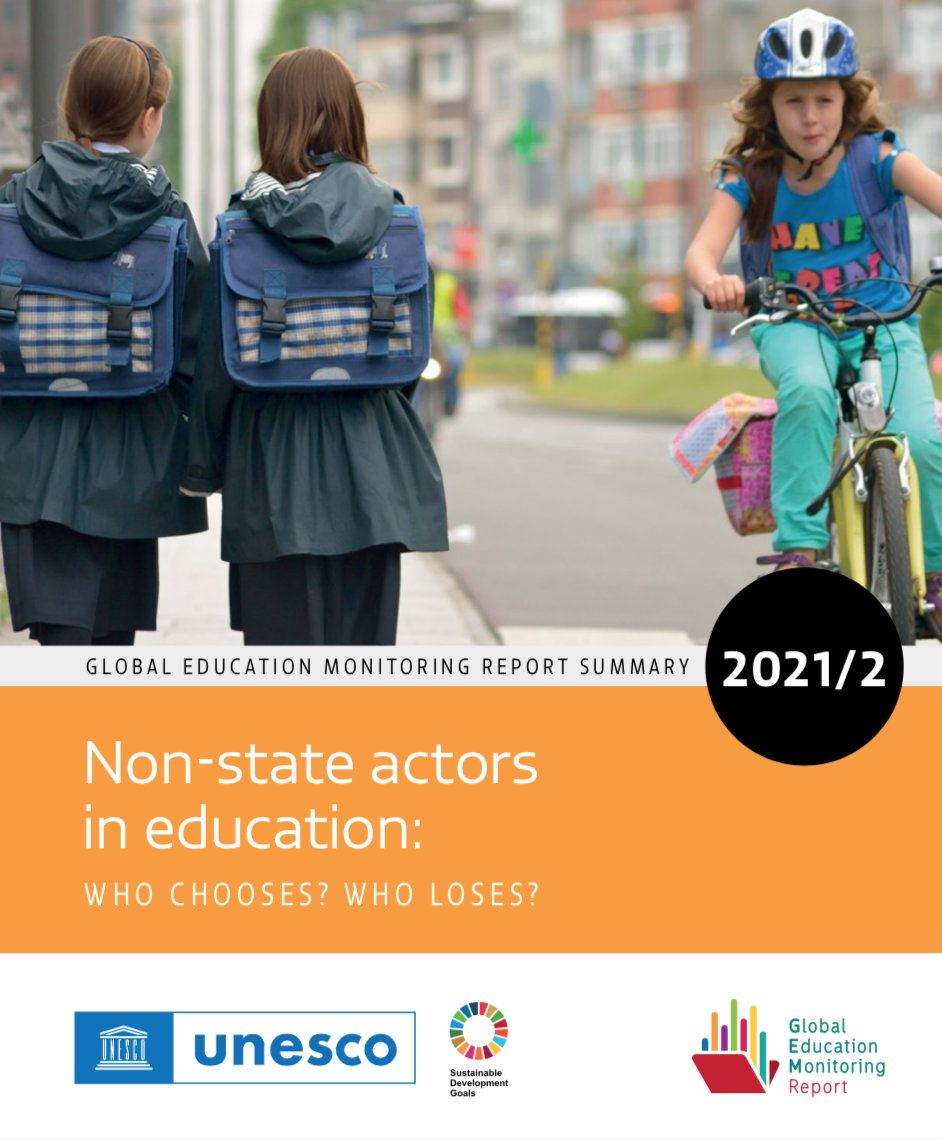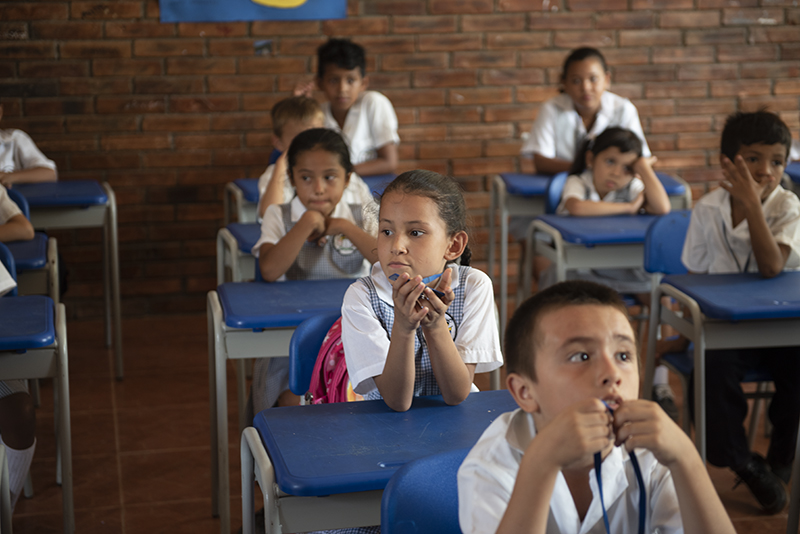We haven’t done our homework
Let’s not fool ourselves. Things are not going well in education. While school enrolment improved in the first years of the 21st century, progress has been insufficient and uneven. That situation was in turn exacerbated by the COVID-19 pandemic, a crisis that has done incalculable damage to the education of millions of students around the world and to their future prospects.
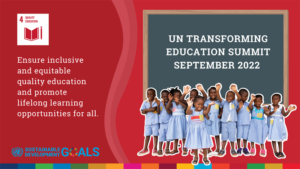
In 2021, 244 million children and young people were not receiving an education. According to UNICEF data, 64.3% of children worldwide (across all countries) are currently unable to read and understand a simple story. This statistic is as high as 70% in middle-income countries and 89% in sub-Saharan Africa. Meanwhile, 840 million young people will leave school during adolescence and without the skills needed for future employment.
In 2021, 244 million children and young people were not receiving an education. According to UNICEF data, 64.3% of children worldwide (across all countries) are currently unable to read and understand a simple story. This statistic is as high as 70% in middle-income countries and 89% in sub-Saharan Africa. Meanwhile, 840 million young people will leave school during adolescence and without the skills needed for future employment.
A famous scientist once said that to achieve different results, we had to do things differently. We cannot expect what did not work before the pandemic to work now. Or, as Leonardo Garnier, special advisor to the Education Transformation Summit, puts it, “If we really want every young person on this planet to have the right to a quality education, (…) we have to transform schools, the way teachers teach, the way we use digital resources and the way we finance education.”
International bodies have long warned: if we do nothing, we risk leaving a whole generation behind.
Seven new global initiatives
It was in this spirit of transformation that the UN Transforming Education Summit (in which ProFuturo was very much present), was held last September. The goal of the Summit was to engage the leadership and commitment of governments, organisations and civil society with the goal of building equitable and inclusive quality education systems together and promoting inclusive learning opportunities for all. To this end, seven new global initiatives were launched to harness the spirit of transformation that education systems need.
-
- Greening education to make all learners climate-change ready;
- Connecting all children and young people to digital solutions;
- Addressing the foundational learning crisis among young students;
- Transforming education systems so that all children and young people affected by the crisis can access inclusive and quality learning, safe learning opportunities and continuity of education;
- Advancing gender equality and girls’ and women’s empowerment;
- Transforming education financing by investing more, and doing so in a way that’s more equitable, more efficient and more innovative;
- Empowering young people to be effective leaders in reshaping education.
If we really want every young person on this planet to have the right to a quality education, we have to transform schools, the way teachers teach, the way we use digital resources and how we fund education.
Leonardo Garnier
Special Advisor to the Summit
From words to action: defining indicators
How will these aspirations and declarations translate into concrete results, and how will countries and development partners be held accountable for achieving them? Well, as has been done so far with the commitments already made, the answer is to use indicators and benchmarks that will help countries to measure their progress.
Seven benchmark indicators already exist, covering some of the new global initiatives. For example, the global initiative for tackling the basic and foundational learning crisis can be monitored with the already-existing indicators of completion rates and minimum proficiency level. The progress of the global initiative for education in emergency situations can be reflected by the dropout rate indicator, broken down specifically for displaced and refugee populations. The aspirations of the global initiative for gender equality are reflected in the gender gap in secondary education completion (although the concept of gender equality in and throughout education is broader and therefore requires a broader set of indicators to be fully captured). Finally, the global initiative related to education financing is adequately covered by the two indicators set out in the Education 2030 Framework for Action (public expenditure on education measured in relation to total expenditure and as a percentage of GDP).
However, the SDG 4 High-Level Steering Committee’s call to action suggests adding a few more indicators to the baseline list to measure progress on other global initiatives to transform education.
For example, an indicator would be needed for the green or ecological education initiative, which aims to ensure that all students are prepared for climate change. An indicator would also be needed for the digital transformation of education initiative, which aims to ensure quality public digital learning for all children around the world.
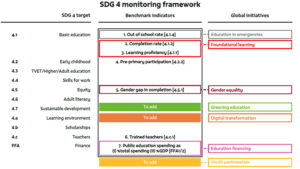
Once the indicators have been identified, countries would be asked to set their national targets, as many of them have already done for the existing ones (3 out of 4 countries have committed to 2025 and 2030 target values for at least one of the seven benchmark indicators). This system allows countries to adopt a culture of shared responsibility and to address the accountability deficit associated with long-term goals. Because commitments and words are important, but to achieve the goals we’ve set for ourselves for 2030, we need much more than promises.



